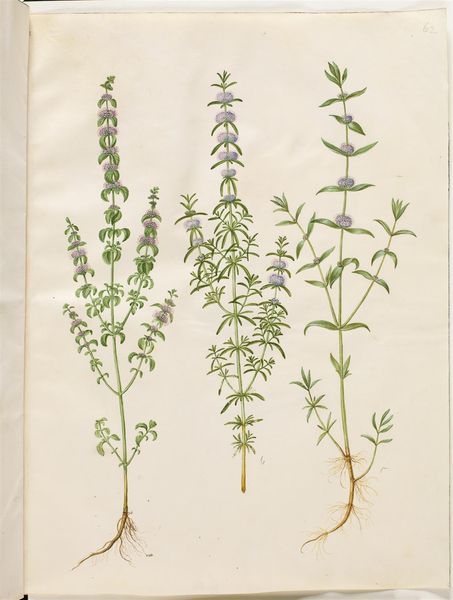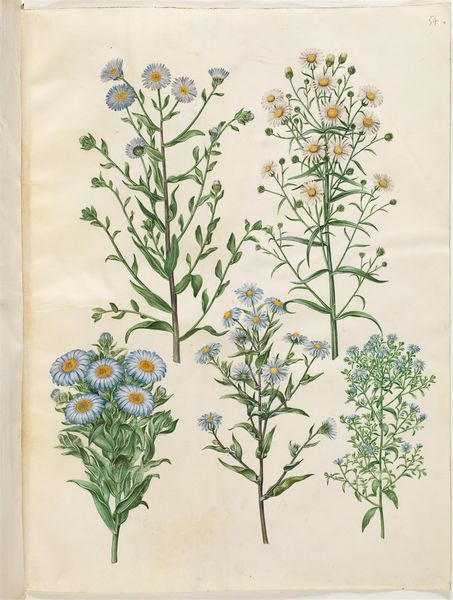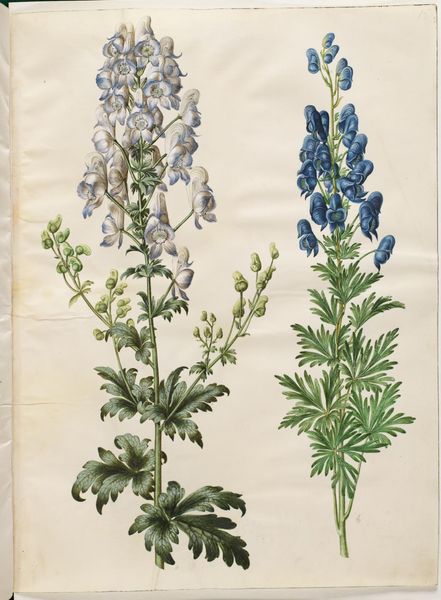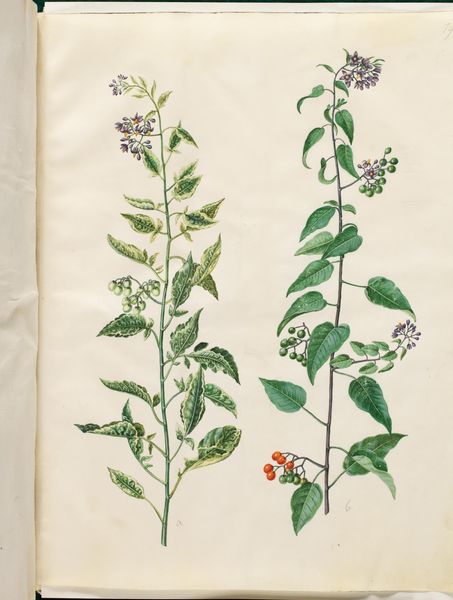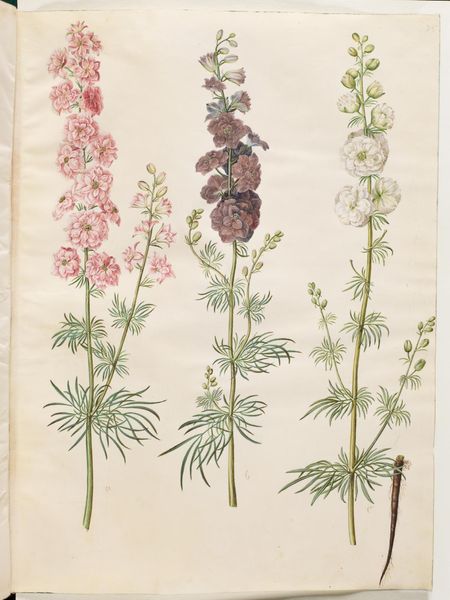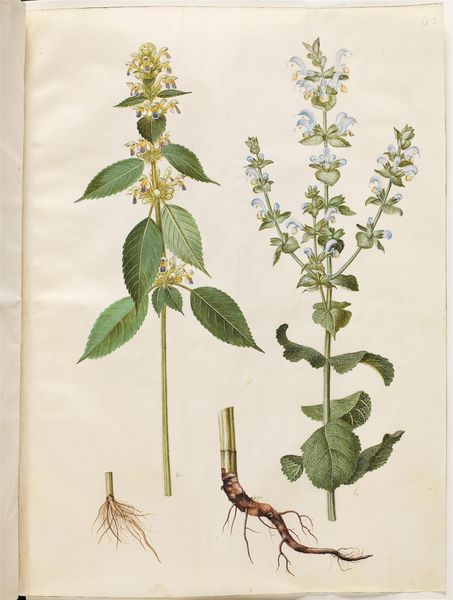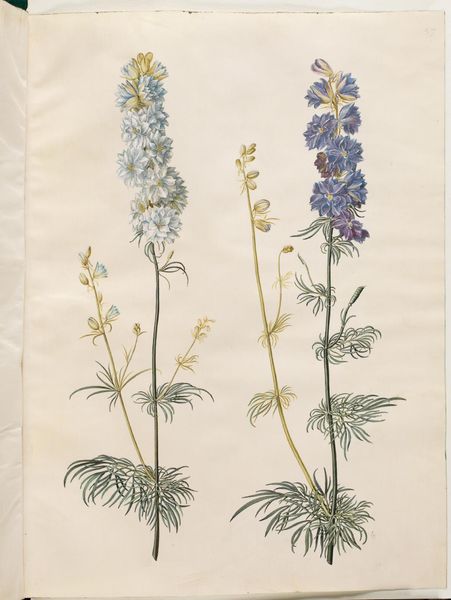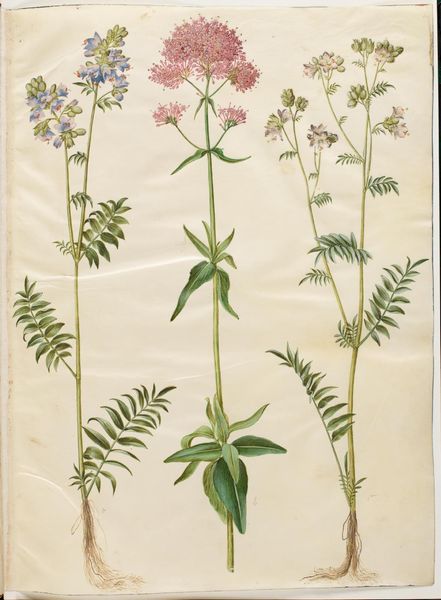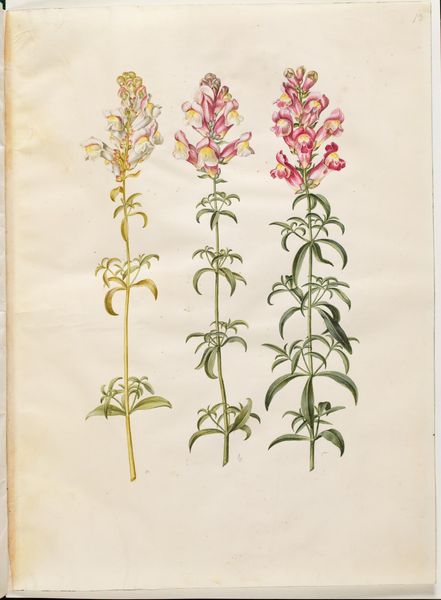
Gentiana pneumonanthe (klokke-ensian); Campanula patula (eng-klokke); Campanula rapunculoides (ensidig klokke) 1649 - 1659
0:00
0:00
drawing, gouache, paper, watercolor
#
drawing
#
water colours
#
gouache
#
paper
#
watercolor
#
northern-renaissance
#
watercolor
#
realism
Dimensions: 505 mm (height) x 385 mm (width) (bladmaal)
Curator: Let's discuss this botanical study from the collection here at the SMK. This sheet, rendered in watercolor and gouache on paper, titled "Gentiana pneumonanthe (klokke-ensian); Campanula patula (eng-klokke); Campanula rapunculoides (ensidig klokke)" was created by Hans Simon Holtzbecker sometime between 1649 and 1659. Editor: Immediately striking. Such precision! The detailed rendering of each bellflower variety creates a quiet sense of awe. It’s like viewing a naturalist's careful record of a hidden world, painstakingly revealed. Curator: Indeed. Holtzbecker's botanical studies served specific purposes beyond mere artistic expression. During this era, botanical illustration played a vital role in scientific documentation and knowledge dissemination. Consider how these illustrations aided in the classification and study of medicinal plants, an important field linked with the power structures of courts and apothecaries. Editor: Absolutely. The work shouts about its own means of production. I am looking closely at the roots—how the artist carefully exposed them. The labor behind accurately portraying each filament…it's a testament to craft. And to whose eye was this craft catering? I suspect it speaks to burgeoning trade and markets, perhaps driving a desire to capture and categorize natural resources. Curator: Certainly. The scientific drive that fuelled botanical exploration was deeply entwined with imperial and economic ambitions, providing visual inventory for exploiting nature's bounty. We see here, quite elegantly, the aesthetics used to advance political projects. Editor: But don’t you think there is something more going on here, too? Yes, these drawings participate in a network of colonial activity and power, but Holtzbecker's rendering has an aesthetic quality to it as well. Each watercolor seems so… delicate, almost reverential of these plants, imbuing the medium with an intimacy so different from something mass produced. Curator: True, the artistic nuance of the medium invites close inspection. Perhaps we can consider Holtzbecker caught within, simultaneously working to advance those scientific goals yet imbuing them with personal vision. Editor: Precisely! Thinking about it this way helps see how the history of the craftmaking itself shapes its impact. Curator: That’s a compelling insight into this work! Editor: Thanks. It's all about understanding the materials and hands that bring the images to life.
Comments
No comments
Be the first to comment and join the conversation on the ultimate creative platform.
